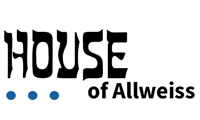In late 1989 Tom had told Al he could sell 10,000 TMC-1800 based 16 bit adapters a month, starting almost immediately. Al was behind on the design, so he decided to order 50,000 TMC-1800 chips before he had verified the design. The chip cost about $20 at the time. When Al finally got the chip working on the ISA and MCA bus computers it required external chip work arounds, which added more cost to the host adapter. Design errors also caused some compatibility problems with some SCSI devices. When Al was finally ready to deliver in July of 1990 the real number of orders Tom had were for about 1,500 a month.
At the beginning of June 1990 I returned from a trip to the Dead Sea for my health feeling well. As soon as I returned Patty showed me the $2 million order that Al had put in with our chip vendor. I quickly call a staff meeting and began asking questions. Al admitted the TMC-1800 still had problems and would not be as compatible as our eight bit products which would limit our ability to sell them. Tom admitted he had inflated the sales numbers. I quickly had Patty and Dante cancel 25,000 of the TMC-1800’s that could still be canceled. So we had over half a million dollars in inventory that would take about two years to burn off at the current sales rate, if customers would accept the product. There was a real chance that we would have to scrap some of the TMC-1800 chips once we had a fully working replacement. Something had to be done, Al and Tom were out of control.
Our sales for the year ending March 1990 were just over $11 million dollars; Tom had forecast sales sales for FY91 ending March 1991 to double to $22 million. By the summer of 1990, half way into the new fiscal year, it was clear we were not going to make $22 million, in fact it looked doubtful we would make the $11 million of the previous fiscal year. In fact we finished FY91 at just under $11 million.
Two things caused the sales shortfall, 1) Al could not deliver the right products in a timely manner; a) The 16 bit product was very late, cost too much and had problems, b) We had no product to address the Bus Master host adapter market, c) An emerging technology, EISA bus, was becoming popular and we did not have an appropriate product for it, and d) The IDE interface became the standard for desktop PC fixed disk drives, manufacturers no longer wanted our eight bit adapters for fixed disks and were using SCSI fixed disk drives only with servers, and server users were demanding 16 and 32 bit Bus Master adapters. 2) Tom did not focus on the markets where we did have competitive products that could be successfully sold such as removable disk drives, optical drives, and CD-ROM drives. He missed the beginning of the rapid adoption of optical disk drives (CD-ROM) and instead continued to focus on fixed disk drives.
I was livid; I talked to my board of directors, Herb Evander and Larry Lapard from Summit. I talked to customers and distributors, and I talked to employees who worked for Tom and Al. I came to the conclusion that I made a terrible mistake putting them in charge. The engineering and marketing issues rested directly on Al Pease’s shoulders. He simply did not deliver quality products in a timely manner. The last issue was a sales problem, faced with late new product delivery Tom failed to pivot the sales force to our strengths and close sales. So what to do now? The company had plenty of cash because of the Summit deal. Patty kept the lid on cost so even though we did not meet sales projections we would come close to breaking even.
